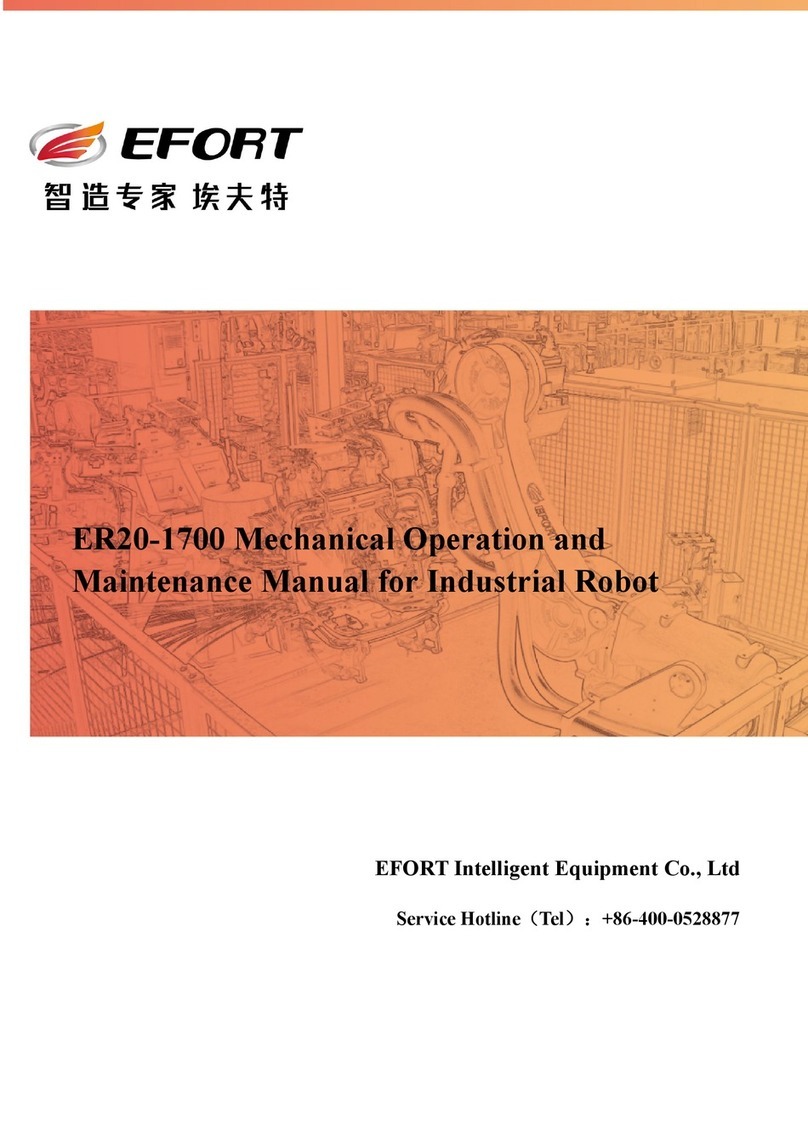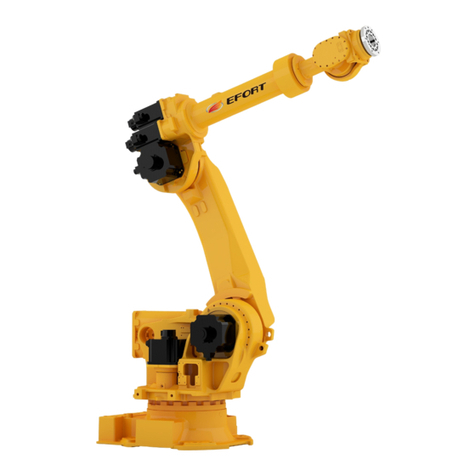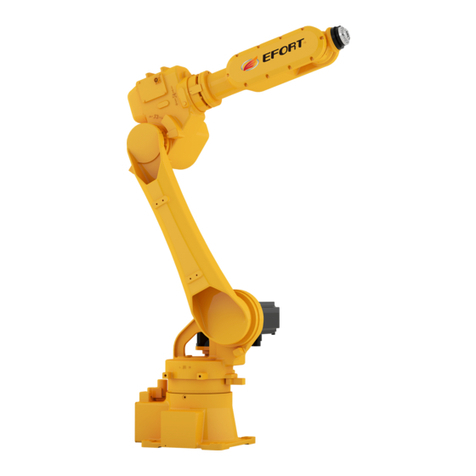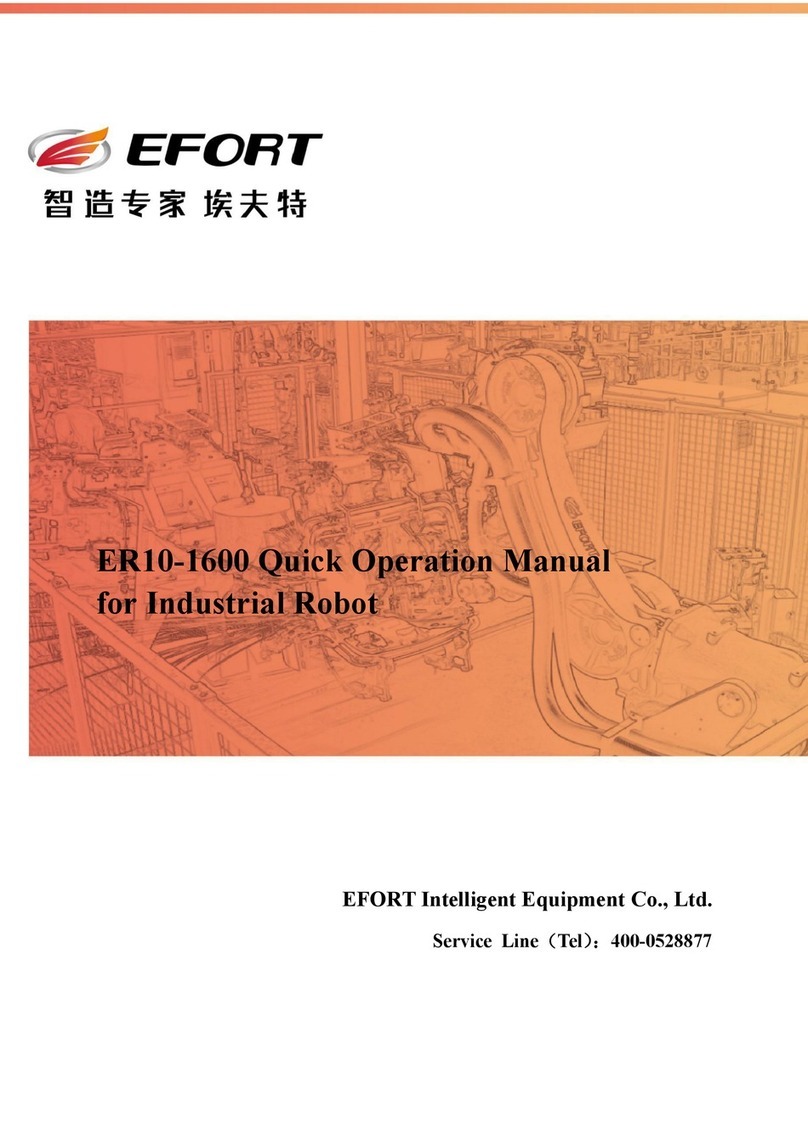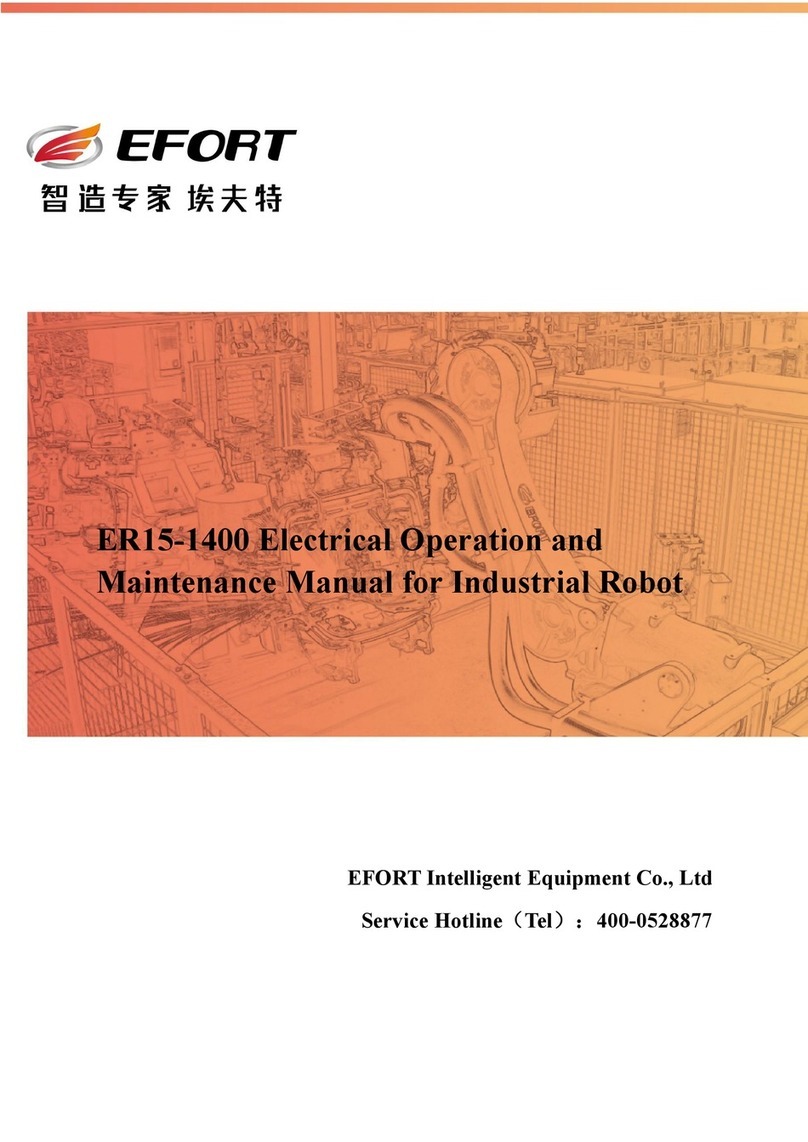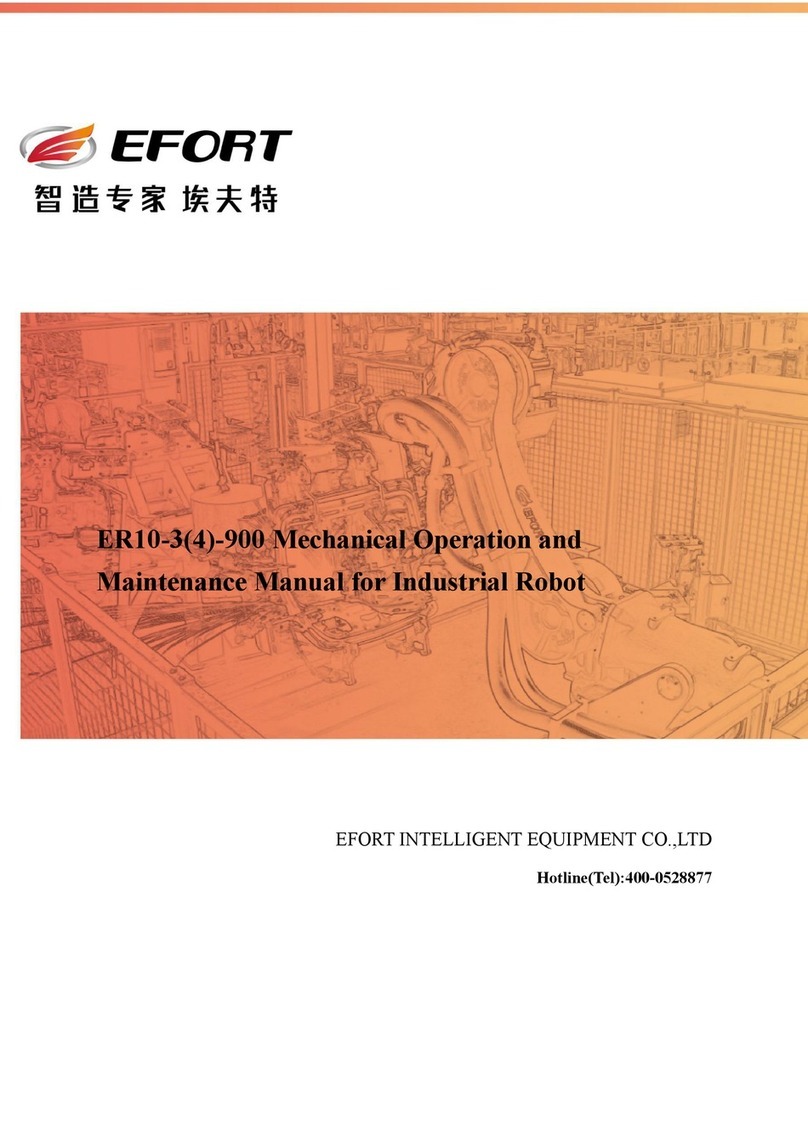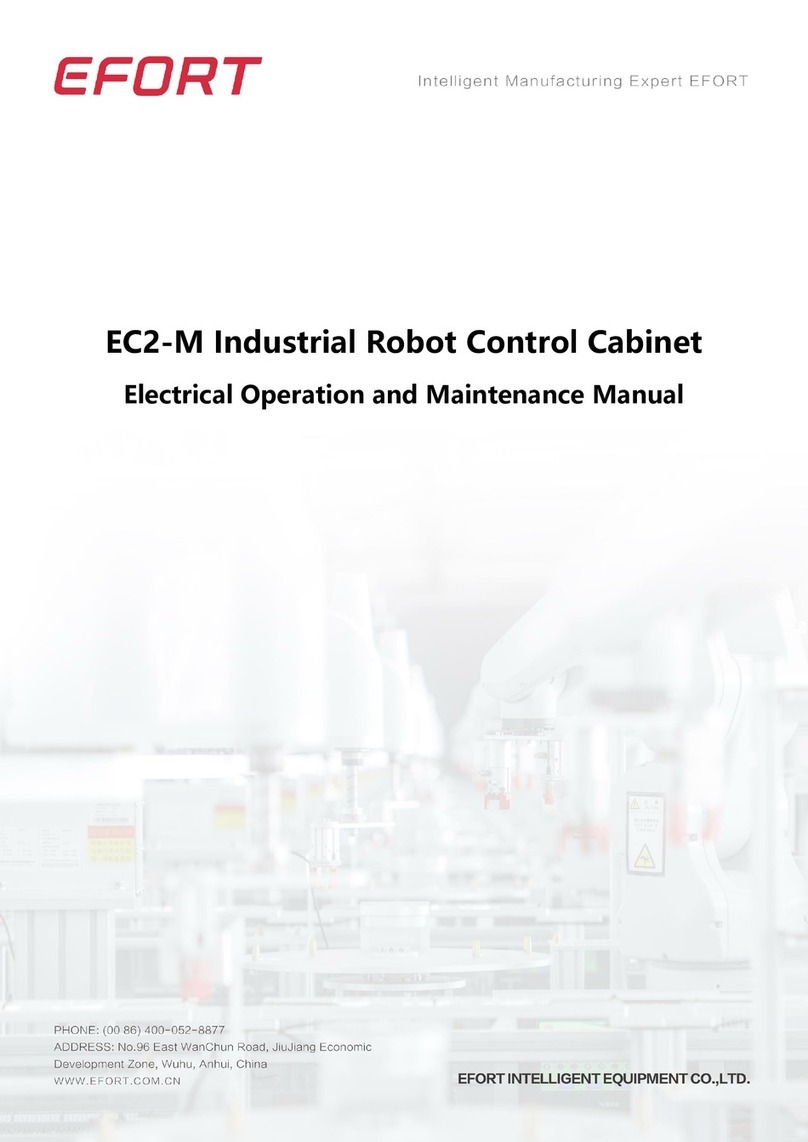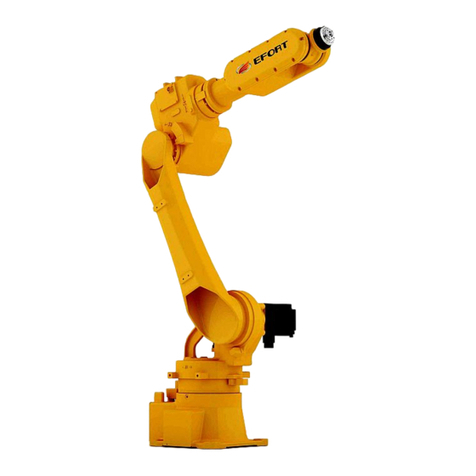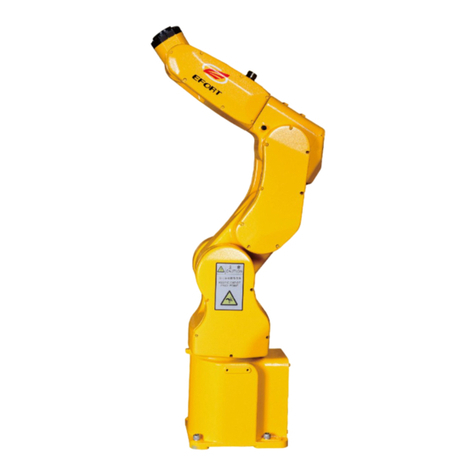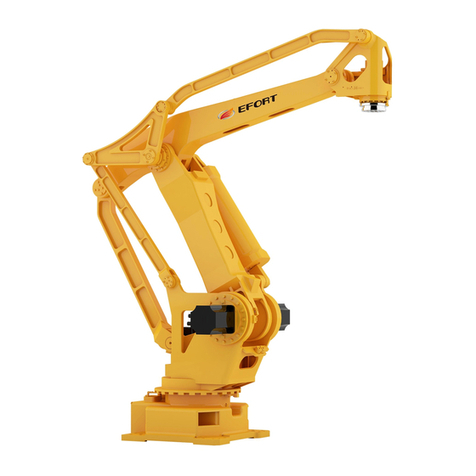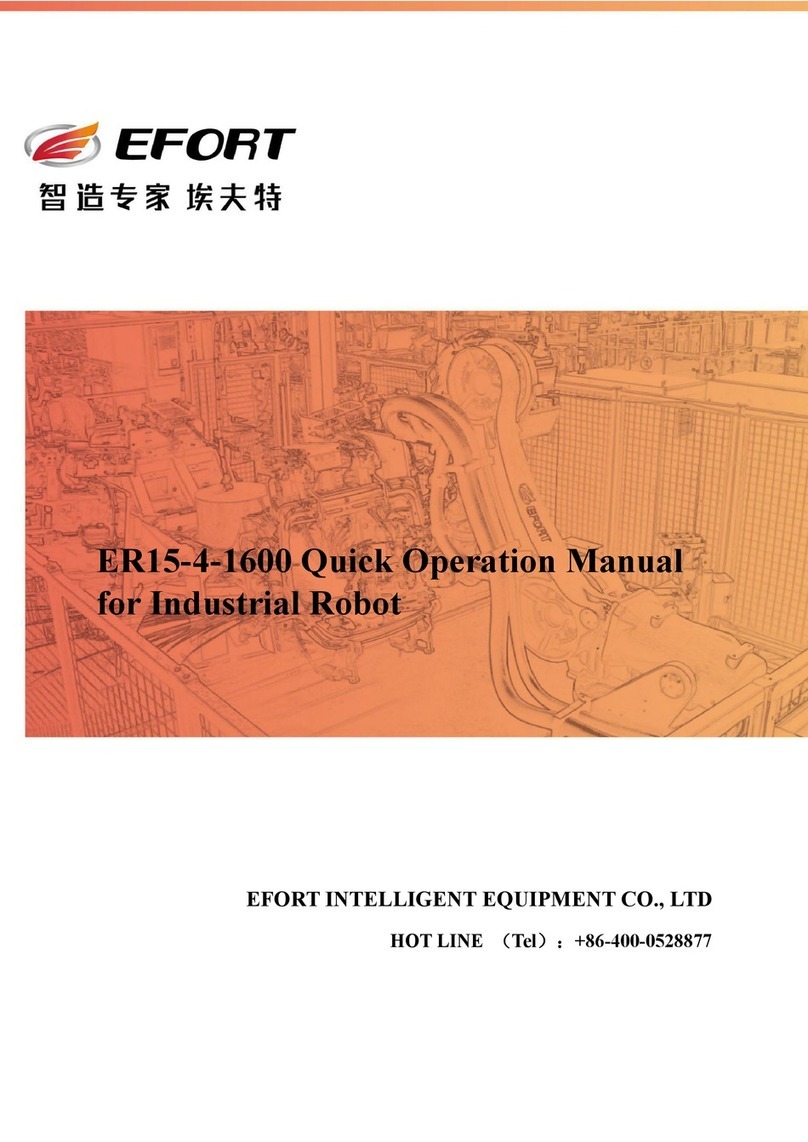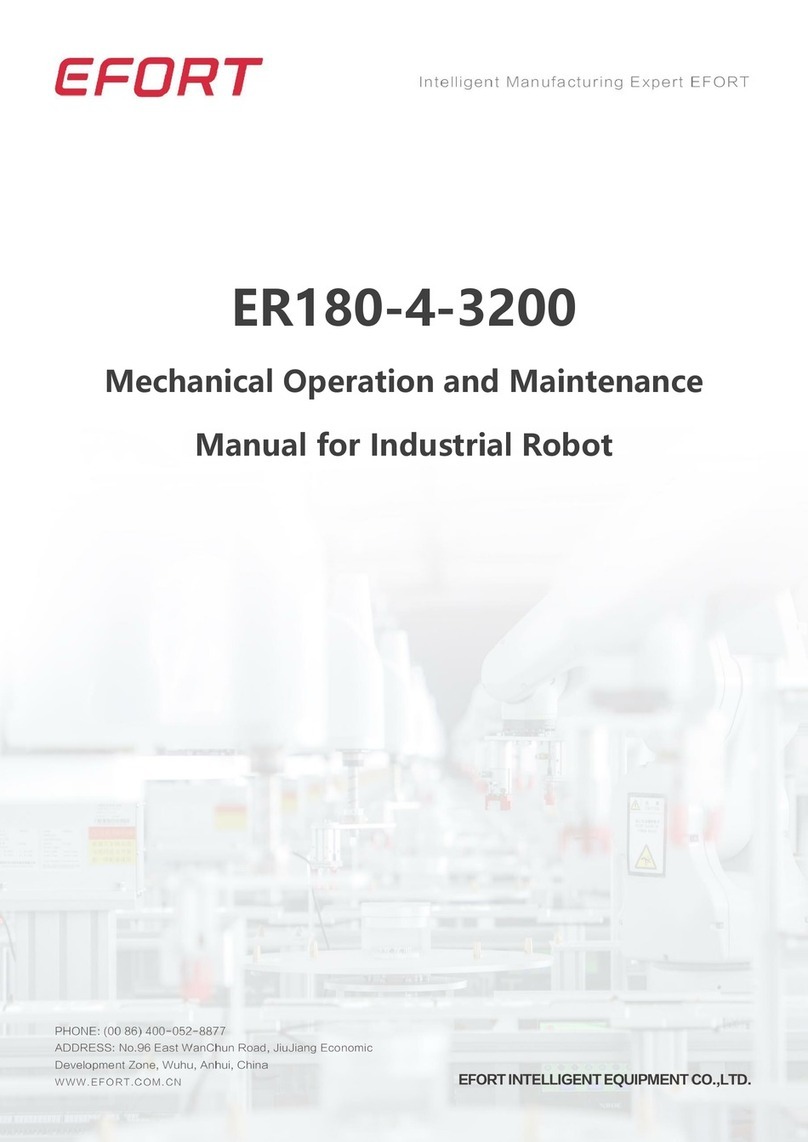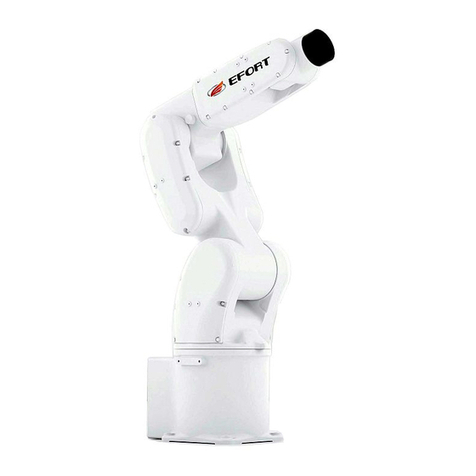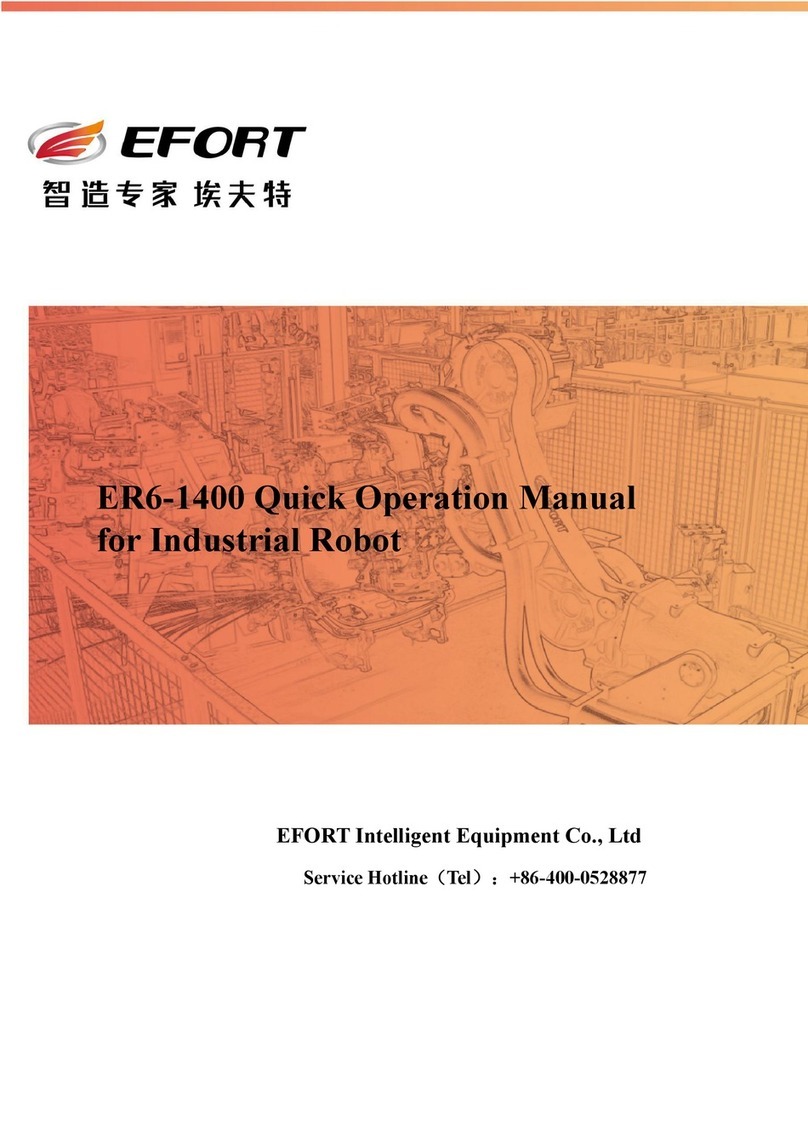
Quick Operation Manual for ER3-600 Industrial Robot (EC2-S electric cabinet)
Contents
Chapter One Safety....................................................................................................... 1
1.1 Safety Instructions.............................................................................................................1
1.2 Safety Regulations.............................................................................................................1
Chapter Two Handling and Installing the Robot............................................................ 4
2.1 General Introduction......................................................................................................... 4
2.2 Basic Description.............................................................................................................. 4
2.2.1 Unpacking........................................................................................................... 4
2.2.2 Preparatory Work before Installation.................................................................. 5
2.2.3 Storage Environment.......................................................................................... 5
2.2.4 Operation Environment.......................................................................................5
2.2.5 Starting the Robot in a Low Temperature...........................................................6
2.2.6 Robot Performance Parameters...........................................................................7
2.2.7 Robot Motion Type............................................................................................. 8
2.2.8 Control Cabinet Position.....................................................................................8
2.3 Handling the Robot..........................................................................................................11
2.3.1 Precautions........................................................................................................ 11
2.3.2 Handling the Robot Body................................................................................. 11
2.3.3 Handling the Control Cabinet........................................................................... 12
2.4 Installing the Robot......................................................................................................... 13
2.4.1 Setting up a Safety Fence..................................................................................13
2.4.2 Installation Procedures......................................................................................14
2.4.3 Ground Mounting..............................................................................................14
2.4.4 Supporter Installation........................................................................................15
2.4.5 Suspended Installation...................................................................................... 15
2.4.6 Installation Environment...................................................................................16
2.4.7 Integrated Connection Interface........................................................................17
Chapter Three Electrical Connection............................................................................20



